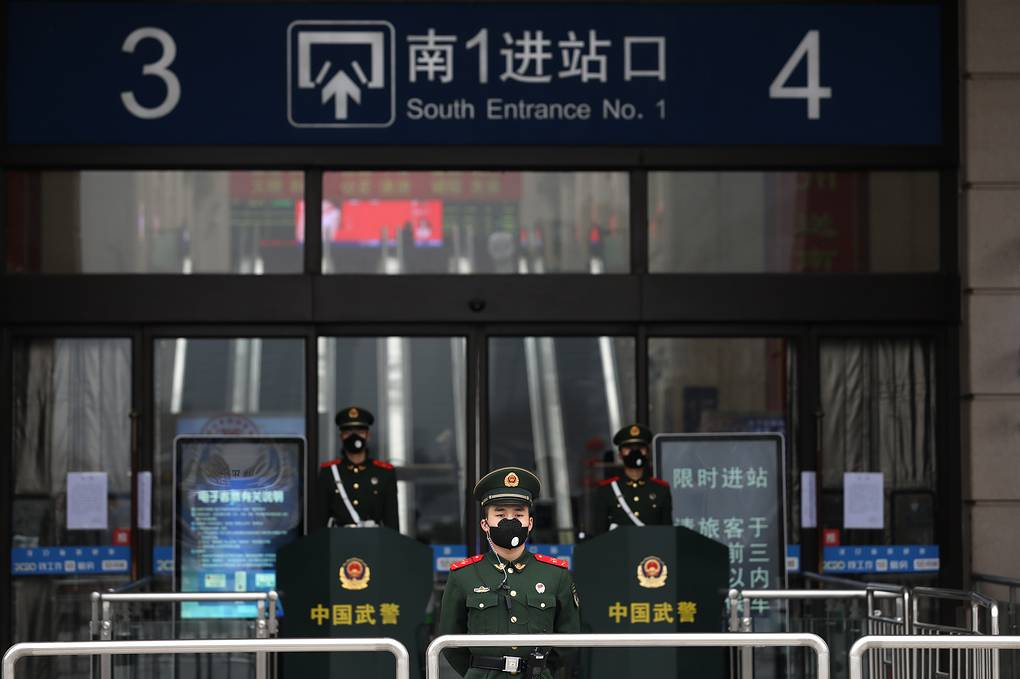
Being the ground zero of the latest epidemic, China’s Wuhan has shut down public transportation, including railway stations, the airport, bus and subway services.
China closed off the city of Wuhan in an unprecedented effort to try to control the spread of the new coronavirus. Wuhan has shut down public transportation, including railway stations, the airport, bus and subway services.
The number of people in China diagnosed with the novel coronavirus 2019-nCoV has reached 617 as of 09:00 Moscow time, according to China’s regional health commission report. The largest number of cases (444) was reported in the Hubei province. The region accounts for all 17 deaths recorded to date. The disease has already crossed borders with sporadic cases registered in Thailand, South Korea, the United States and Japan.
On December 31, 2019, the Chinese authorities informed the World Health Organization (WHO) about the outbreak of a previously unknown pneumonia strain in the city of Wuhan in central China. On January 7, 2020, Chinese specialists identified the 2019-nCoV coronavirus as the culprit. All cases of the suspected pneumonia were lab tested. As a result, infectious agents of such diseases as flu, bird flu, severe acute respiratory syndrome (SARS) and Middle East Respiratory Syndrome (MERS) were excluded from the list of possible pathogens. – TASS Russian News Agency
China’s Hubei and Guangdong provinces declare first-level public health emergency
According to latest reports, the number of infected persons in China reached 644, and 18 people died from the new coronavirus 2019-nCoV .

BEIJING, January 23. /TASS/. The authorities of the Chinese provinces of Hubei and Guangdong have declared a first-level public health emergency over the outbreak of the new coronavirus 2019-nCoV. According to the statements released by the administrations of the two regions, all government departments have been mobilized in the effort to contain the outbreak.
The first-level public health emergency envisages mobilization of personnel, government departments and enterprises in fighting against the outbreak, as well as using all necessary materials and resources. In order to prevent the spread of the outbreak, local governments may cancel public events, temporarily suspend the operation of companies and educational institutions, restrict access to potentially dangerous areas, make temporary requisitions for houses, cars, equipment and other resources.
Local authorities may also restrict the freedom of movement and migration, institute epidemiological screening for people and transport, put residents into quarantine if they are suspected to have contracted the virus.
On December 31, the Chinese authorities informed the World Health Organization (WHO) about the outbreak of a new type of pneumonia in the city of Wuhan in central China. On January 7, Chinese specialists determined the virus behind the infection — coronavirus 2019-nCoV. Doctors say that the symptoms of the new coronavirus include running nose, cough, sore throat and chest tightness. Migraines and fever are also possible, and they can last for several days. The risk group includes people with a compromised immune system, such as the elderly and children. They present with symptoms similar to those of penumonia and bronchitis.
According to latest reports, the number of infected persons in China reached 644. Eighteen people died from the coronavirus. Several cases of the new coronavirus were also confirmed in other countries – three in Thailand, two in Vietnam, one each in South Korea, Singapore, Japan and the United States. – TASS Russian News Agency

